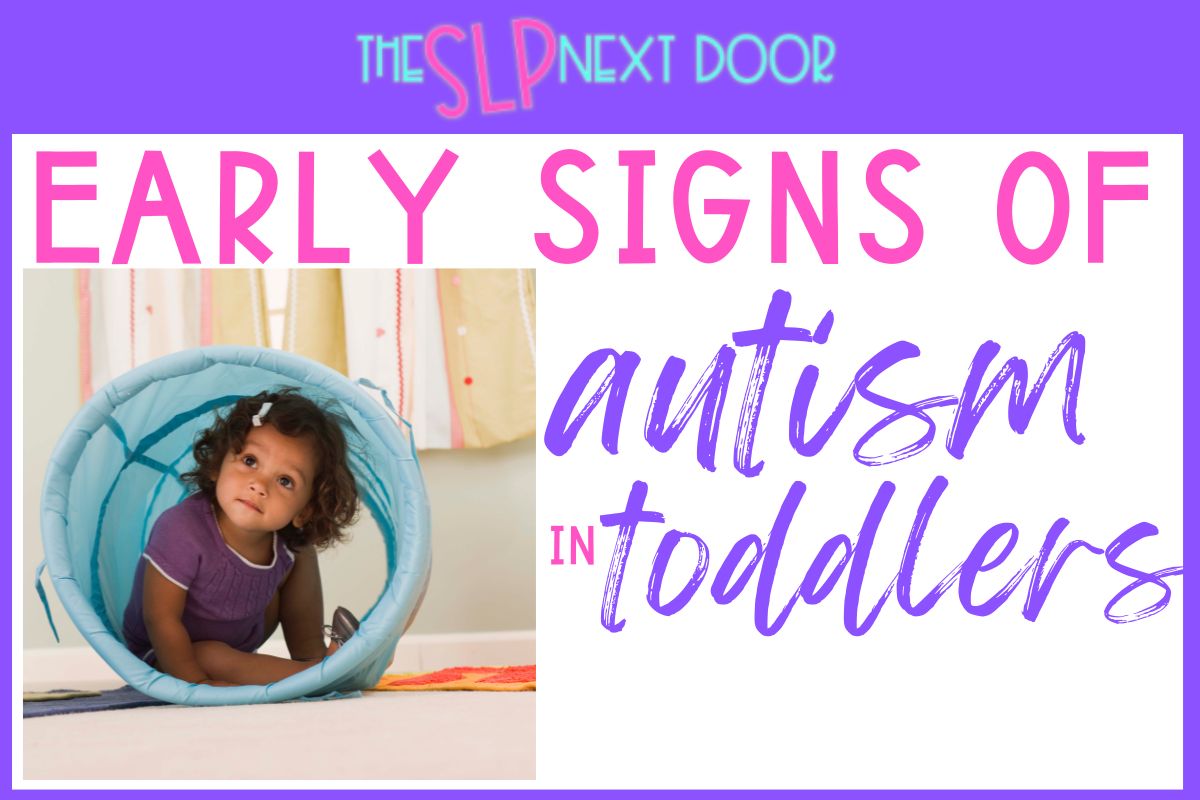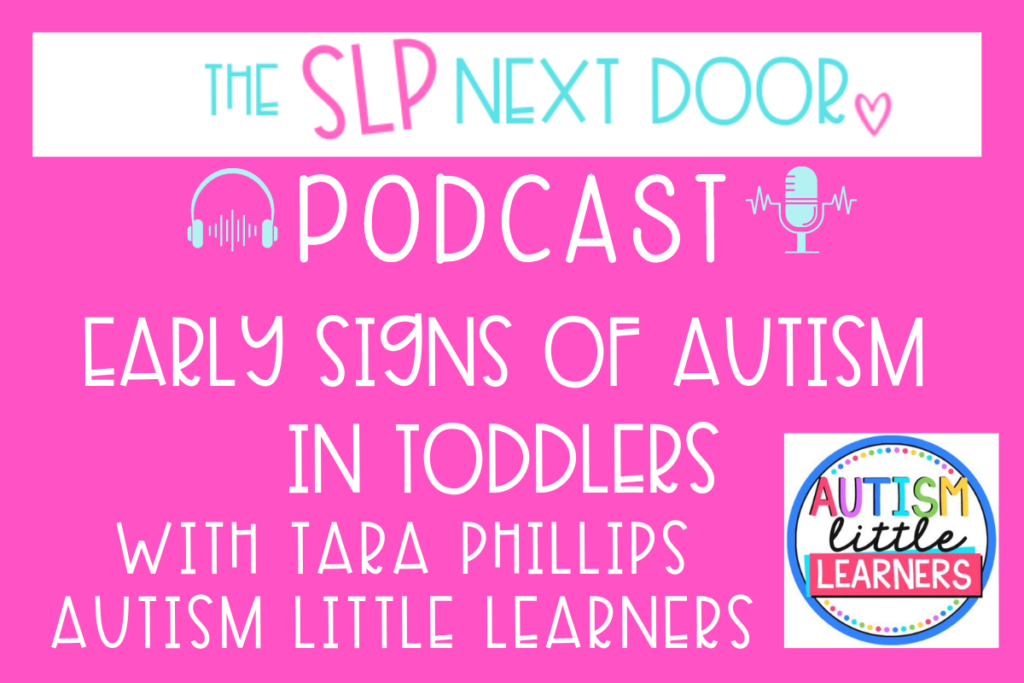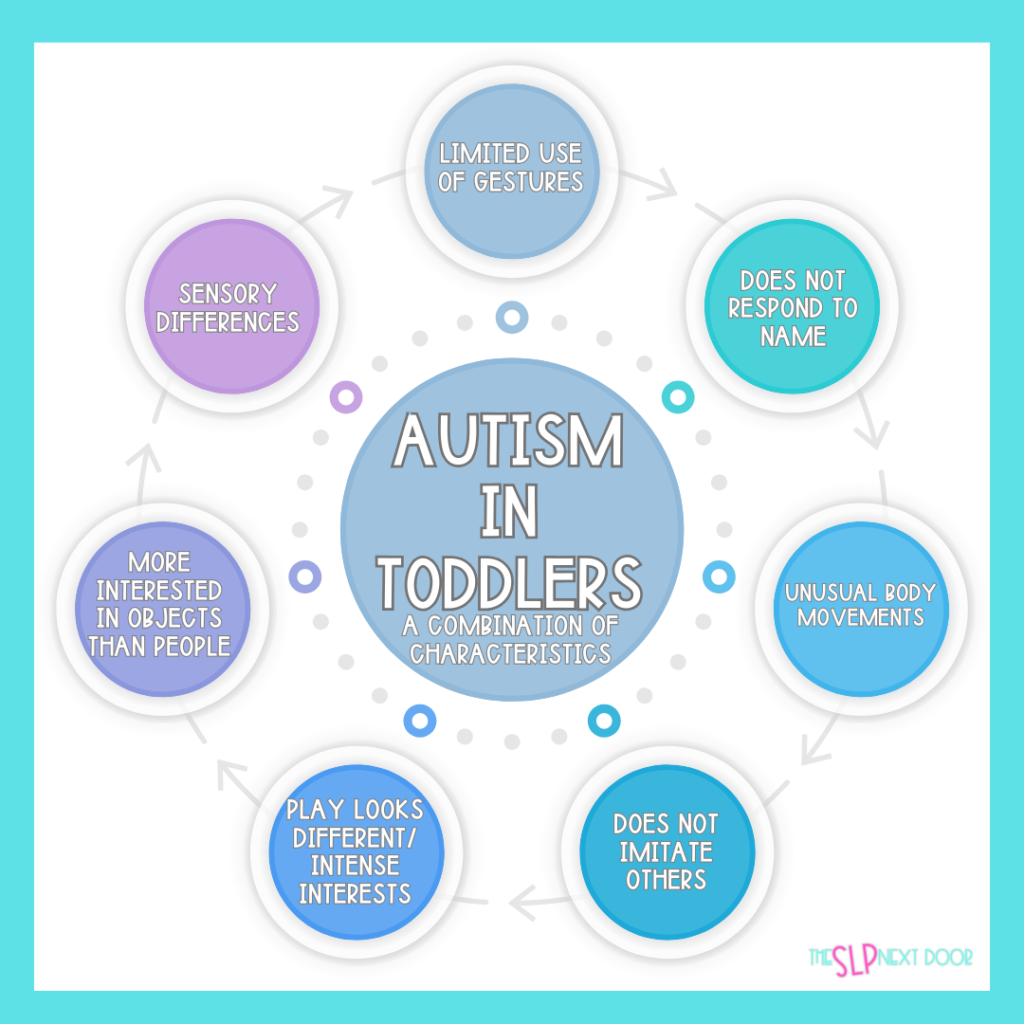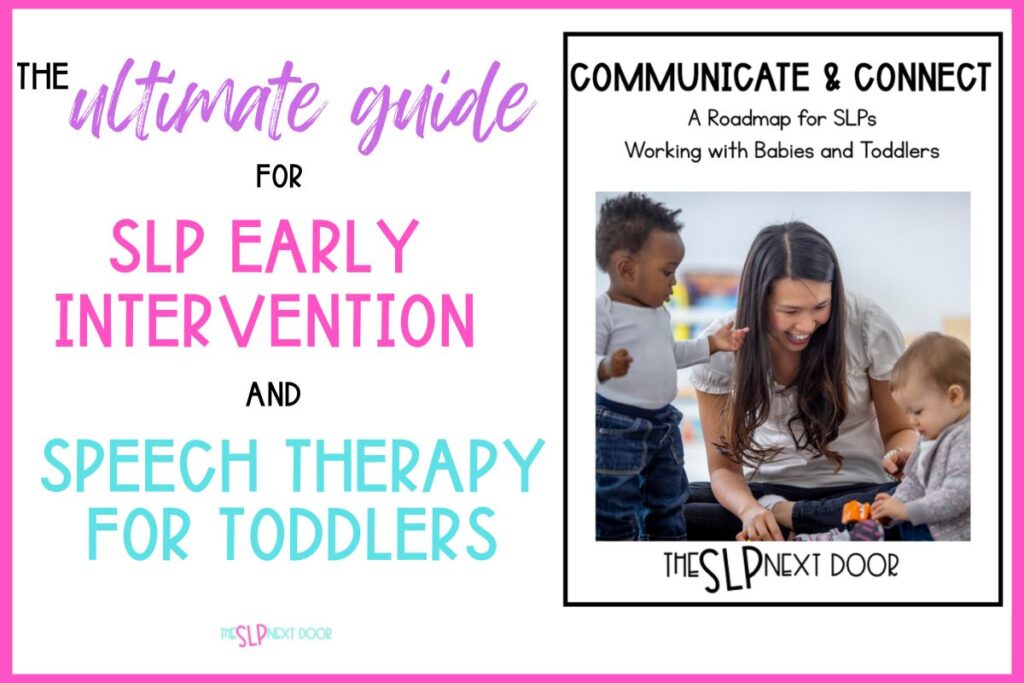I’m just going to be very honest and upfront with you about this post. Traits of Autism in 2 year olds and other early signs of Autism can be a complicated topic to discuss and find information on. Diagnosing toddlers with Autism can be tricky territory- to say the least. Diagnosing toddlers with anything can be tricky (even down the common cold).
Here’s an unpopular opinion, but, I just want to be honest with you. More often than not, unless it’s “obvious”, most diagnoses, i.e., Autism, ADHD, ID, etc., can look the same within this age group.
When I say “obvious,” I am referring to those little ones that you just know something is going on.
And believe me, I get that the answer isn’t what you’re seeking- but, friend, it’s true.
Buckle up friends! This one is kind of long and has a lot of info!
Want the shorter version? I had the opportunity to talk with Tara from Autism Little Learners for a series of podcast episodes discussing the early signs of Autism in toddlers- you can listen in on that conversation by clicking the picture below. (it’s only about 15 minutes long!)
As you read through these different indicators, it’s so important for to remember that when it comes to diagnosing Autism, it is a multi-disciplinary evaluation. And for good reason. We must look at the toddler as a whole. In other words, just because a toddler has one or two of these characteristics, doesn’t always mean Autism. It may mean ADHD, Intellectual Disability, Developmental Delay, or something else.
Collaboration and information from other specialists (including parents/caregivers) is so important. We have to be able to see the toddler from all sides and work together.
In no particular order:
Eye Contact Differences
Differences in eye contact is typically one of the first indicators of Autism. As we move away from the “doesn’t make good eye contact” goals, here’s another way to look at it: doesn’t look at a person for social communication purposes and exhibits difficulty with joint attention.
Instead of working on eye contact, focus more on encouraging toddlers to participating in simple social exchanges, taking turns with activities, or building and sustaining joint attention.
Not Responding to their Name
Initially, we want to ensure the toddler is not experiencing difficulties with their hearing. After that is ruled out, if a toddler still isn’t responding to their name, keep that in the back of your mind and ask yourself: is there anything else I’m “not” seeing?
Limited use of Gestures
Babies/toddlers should be using 16 gestures by 16 months of age. Again, if a toddler is not waving, pointing, handing objects to others, etc. Take an inventory of what else might be going on.
If you’re looking for more information on gestures and language development, be sure to check out my guide of speech therapy for toddlers: Communicate and Connect
Not Imitating Others
Imitation is a prelinguistic skill that babies begin to demonstrate in infancy when they begin to imitate the actions of others. You can read more about imitation development in this blog post.
Play Looks Different/Delayed
Typical developing toddlers will probably line up their toys at one point or may perform the same action with a toy over and over again during the developmental stages of play. However, in typical development, toddlers progress through the stages and into more functional/pretend play. Autistic toddlers often do not progress through the stages of play without prompting and encouragement.
Remember: just because a toddlers play looks different, doesn’t mean it’s not play.
Consistently Uses Another’s Hand as a Tool
Typical developing toddlers may grab their parent/caregivers hand initially as they are learning to communicate; however, this will quickly transition to their use of gestures independently. Autistic toddlers/children will consistently reach for and use others to complete activities.
More Interest in Objects than People
Early signs of Autism in toddlers also includes their interest in objects versus people. Autistic individuals tend to be more engaged with objects (spinning items, stacking blocks, lining up cars, doing the same action with a toy over and over again) on a more intense level. Parents may comment “I just can’t get his attention. All he wants to do is spin the wheels on the car tires.” You’ll also notice it in your therapy sessions, because they’ll be more interested in your toys (or theirs) instead of you and what you have to say.
This doesn’t mean they aren’t listening. It goes back to the limited eye contact/looking at others for social communication.
Unusual Body Movements
Unusual body movements refers to any form of stimming behaviors Autistic individuals may present. Typical developing toddlers may also demonstrate some of these behaviors as a part of normal development. The difference is, Autistic individuals use stimming behaviors consistently and across a variety of contexts.
Intense Difficulty with Changes
Typical developing toddlers often display behaviors secondary to changes in routines, separation anxiety, and learning to communicate. These behaviors are typically referred to as “tantrums” or difficult behaviors. They tend to appear between 18 months and 3 years old.
So how do we tell the difference? The intensity of the behaviors. Typical developing tantrums can often be redirected or calmed in a fairly quick manner.
Intense Interests
Typically, developing toddlers will want parents and caregivers to read the same books over and over again, and they may seem to gravitate toward a favorite character or topic for an extended amount of time (as in only wanting to watch Bluey for months on end). Over time, these interests will be adaptable and change.
Intense interests refer to situations where a toddler (or preschool/school-age child) is highly interested in a specific topic or character; they know everything about it. Think Sheldon Cooper from Young Sheldon and Big Bang Theory and his love of trains.
Examples I’ve come across in the past included: trains, dinosaurs, space… Every topic of conversation somehow reverts back to the topic, they only want to engage or interact with that toy, will only look at a books with the specific characters.
Here’s the insight to this: if you can discover a toddler’s favorite characters (Autistic or not), that can be your key into their world.
Sensory Differences
I feel like this goes without saying, but Autistic Toddlers are going to have sensory differences than neurotypical toddlers.
Sensory differences will come in the form of food preferences (or aversions), aversions to certain textures, such as not wanting to touch certain things or wear certain clothes. Additionally, they may experience difficulty with loud noises (or not notice loud noises at all) and visual preferences.
As with the intense interests or intense difficulty with transitions/changes, something to keep in mind; sensory aversions will be “intense” too. For instance, as Tara mentions in the podcast episode, some may only want McDonald’s French fries.
I know it’s a lot of information to process, but here’s the deal: The more we can educate ourselves on Autism Spectrum Disorder, the early signs of Autism, and its indicators, the better equipped we will be to help the little ones on our caseload.
Recommended resources: Autism Little Learners, The Hanen Centre, Jessie Ginsburg, SLP





